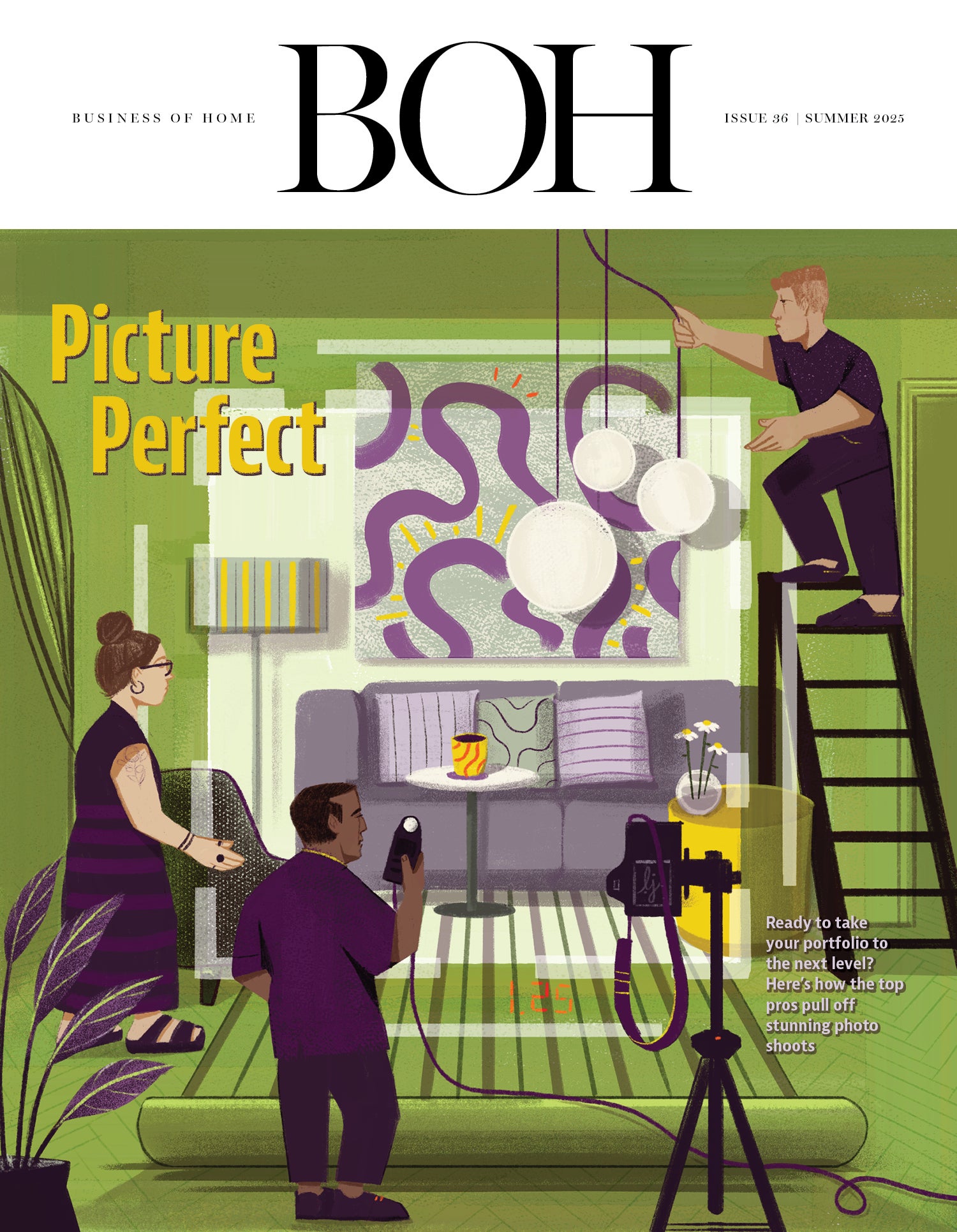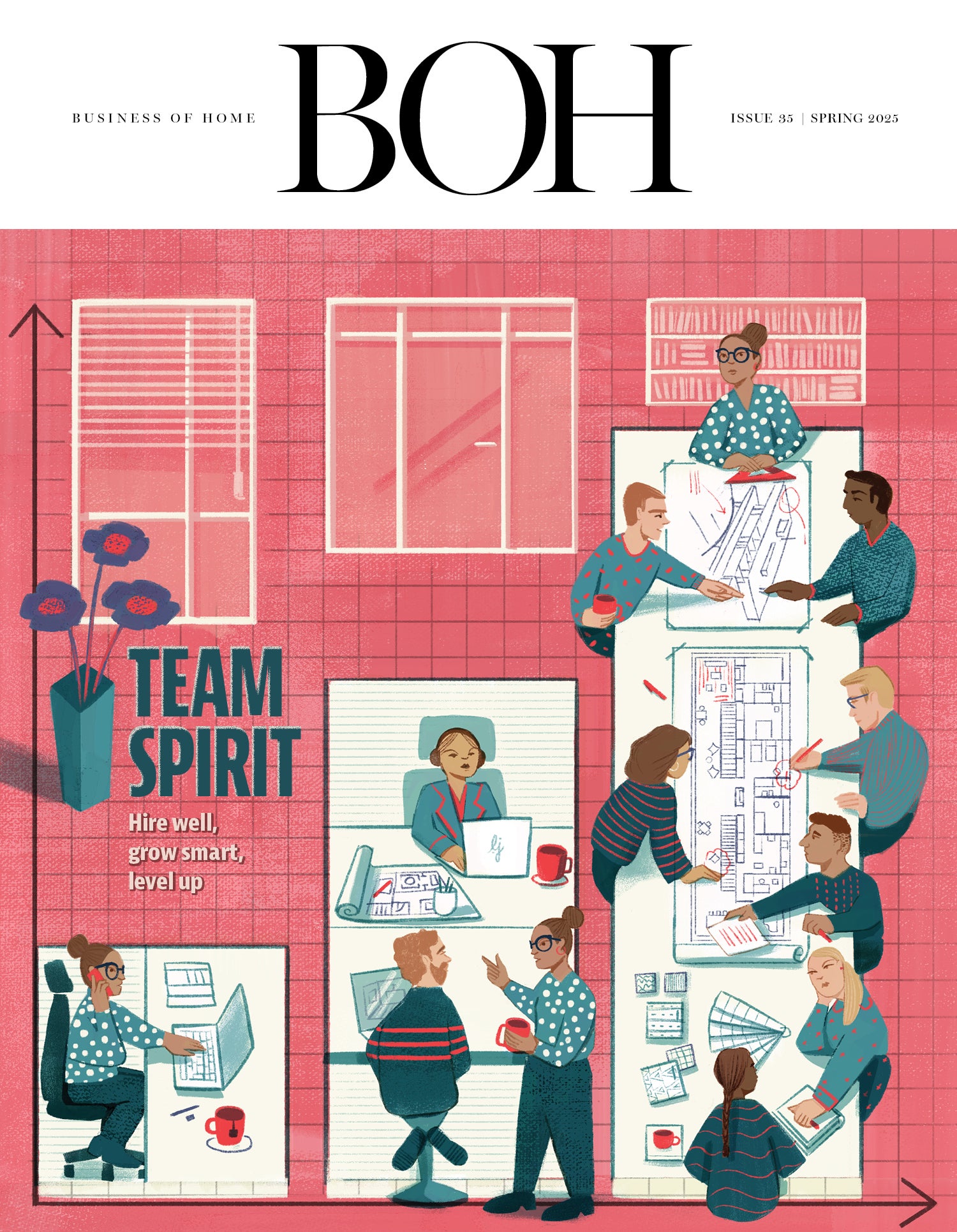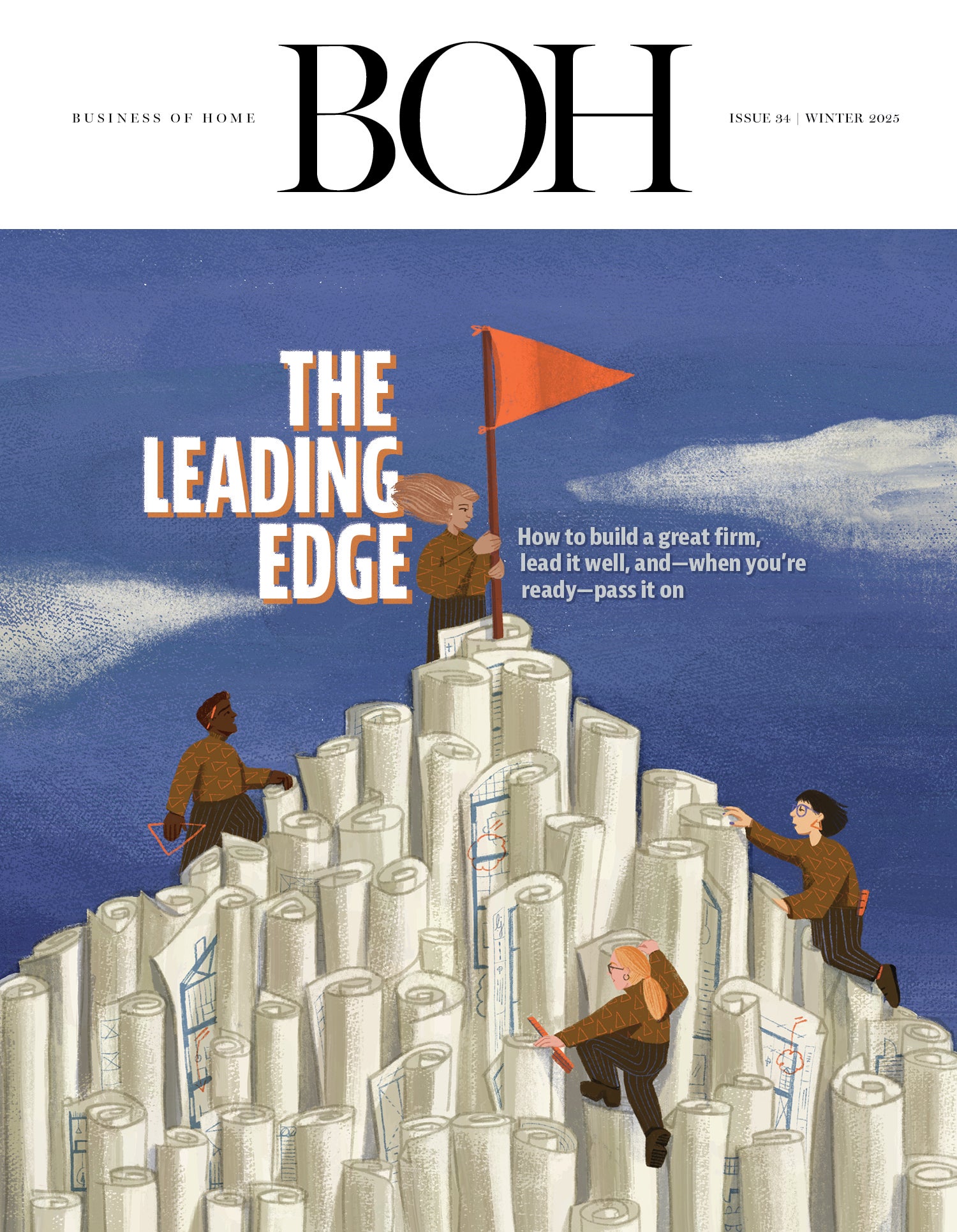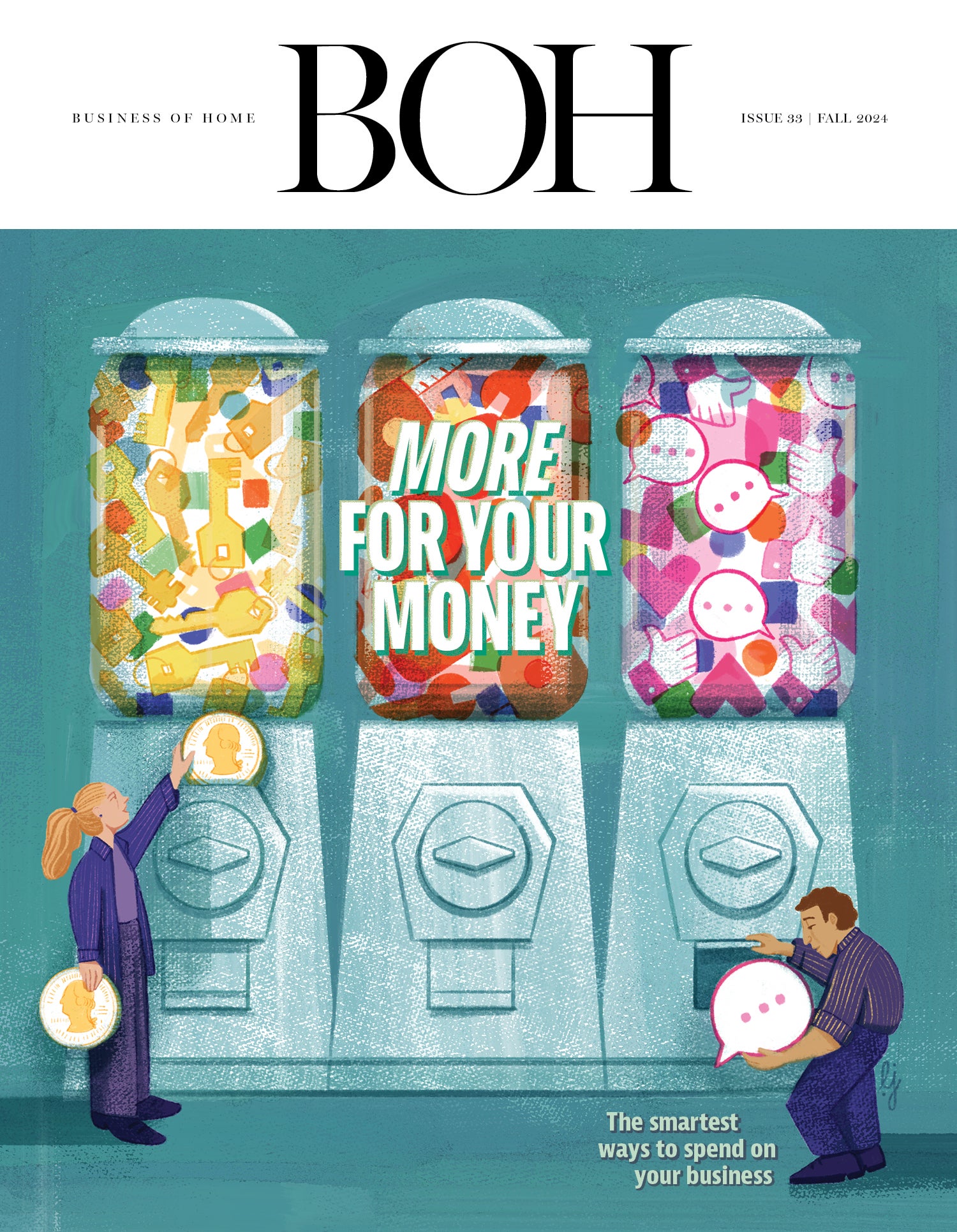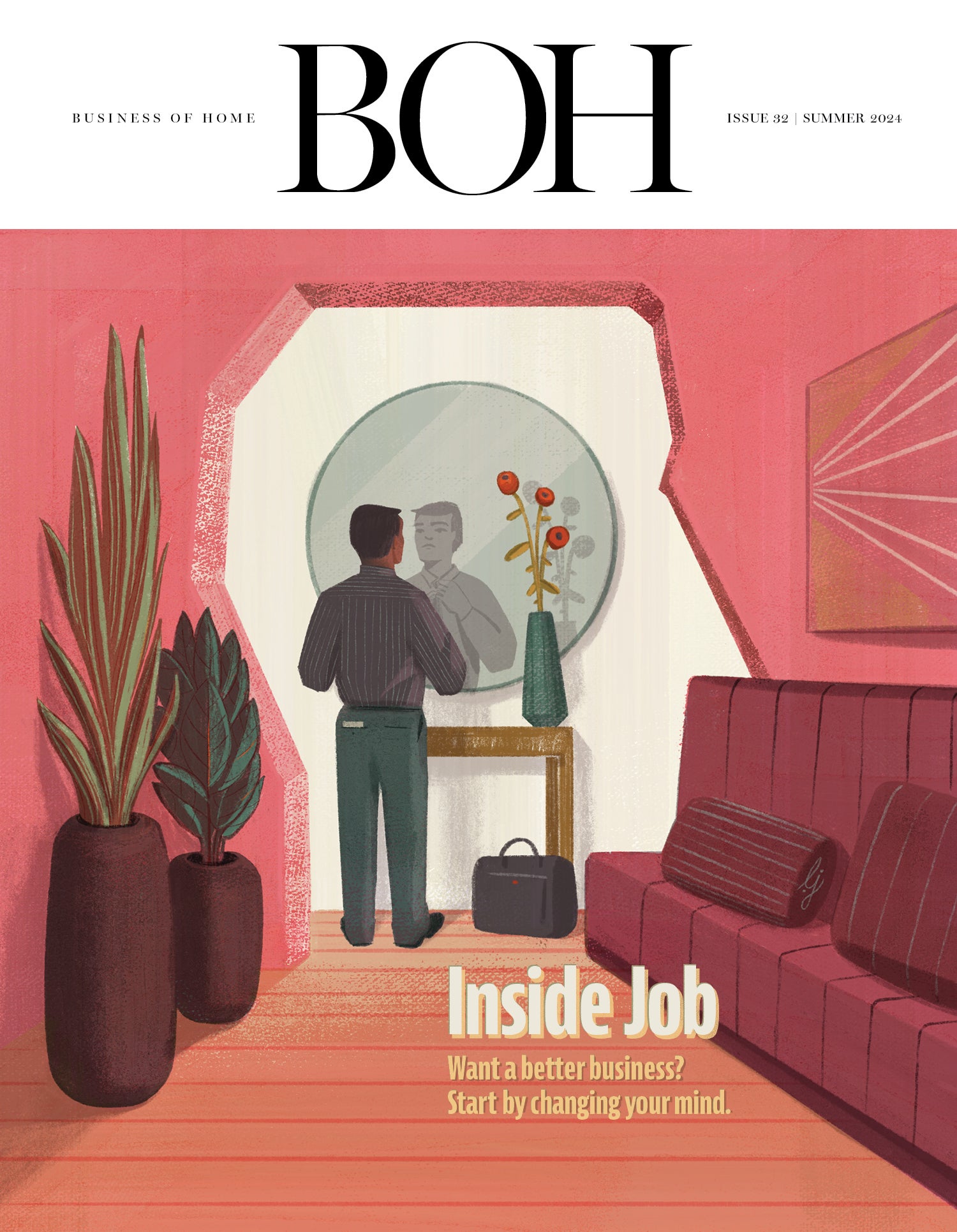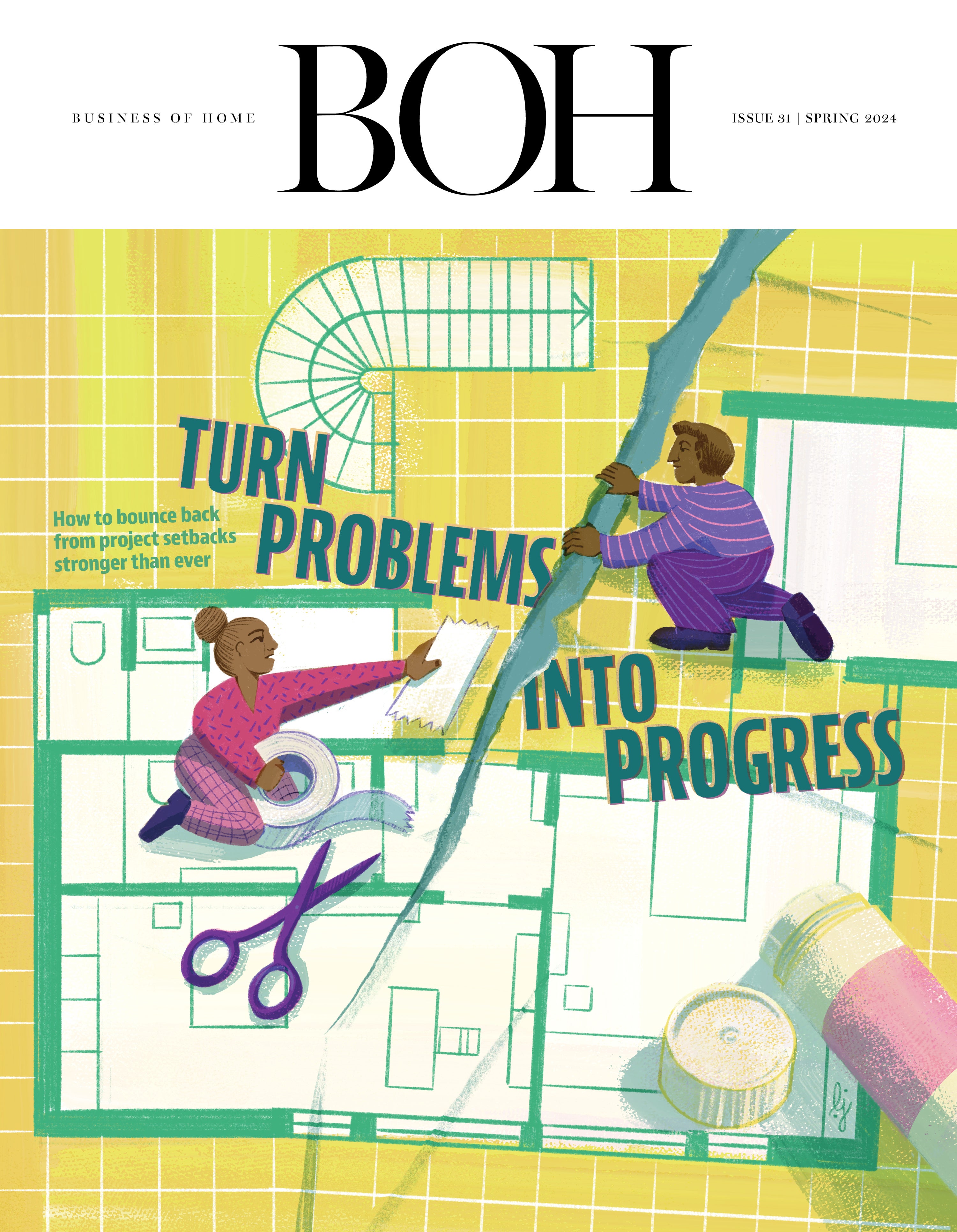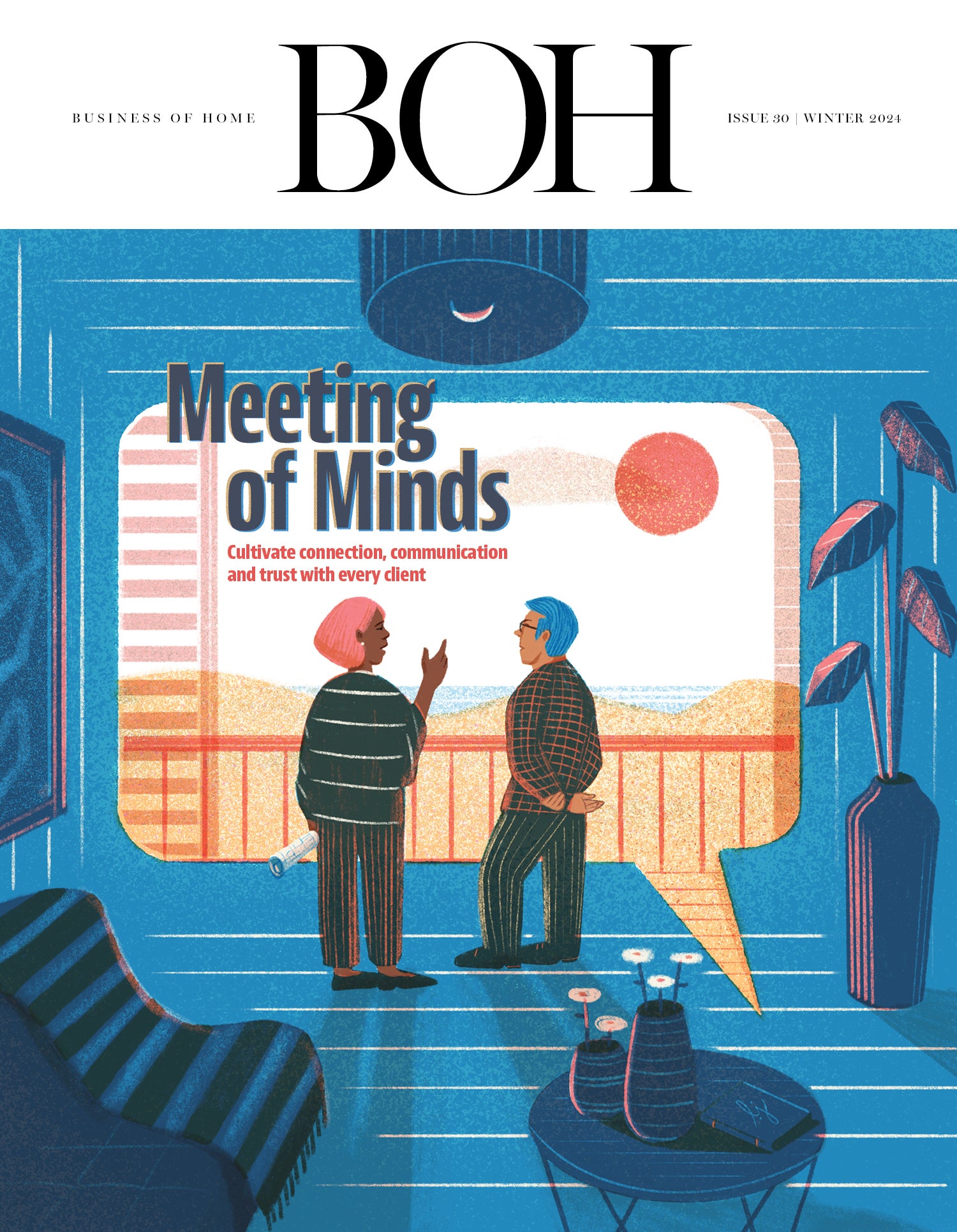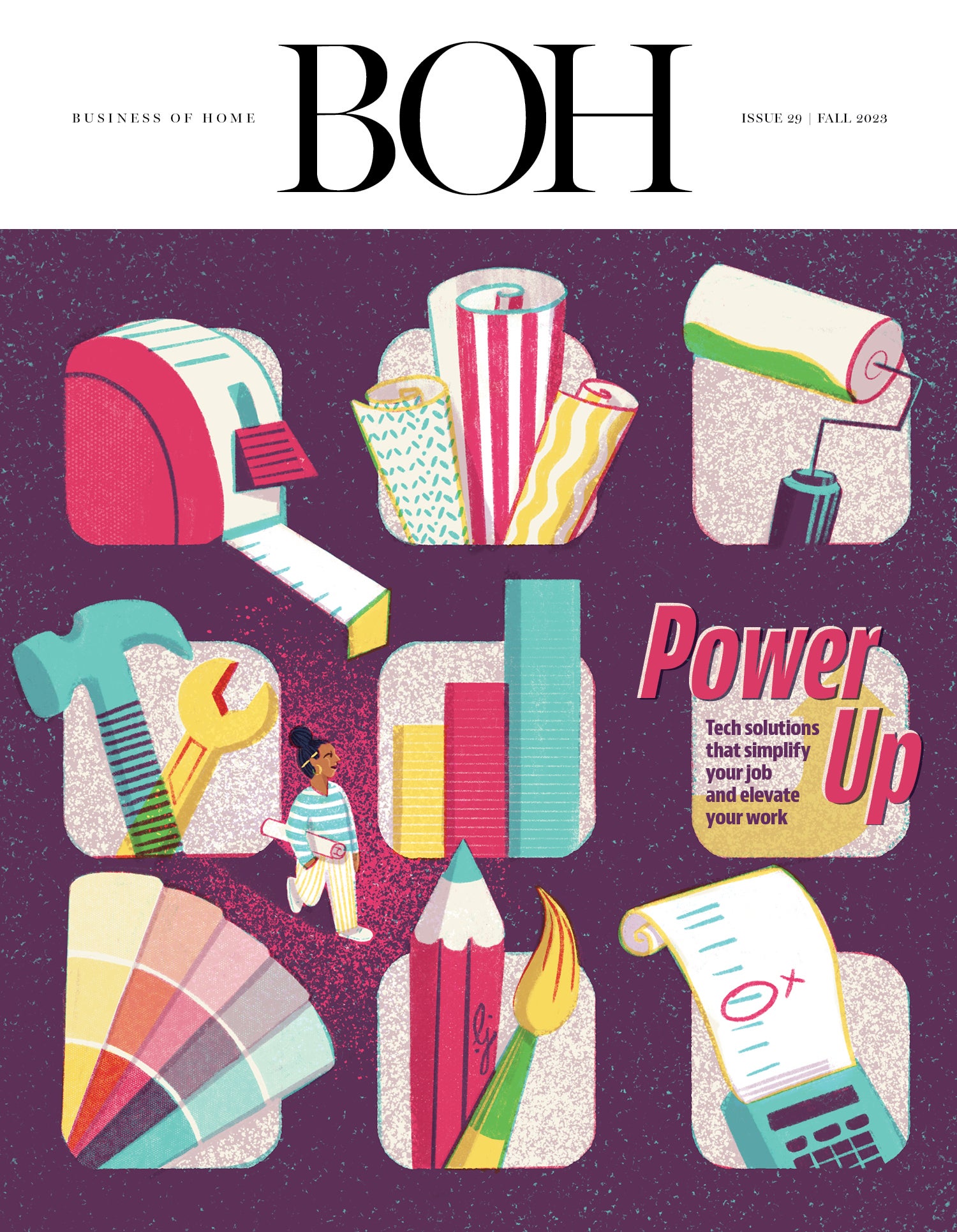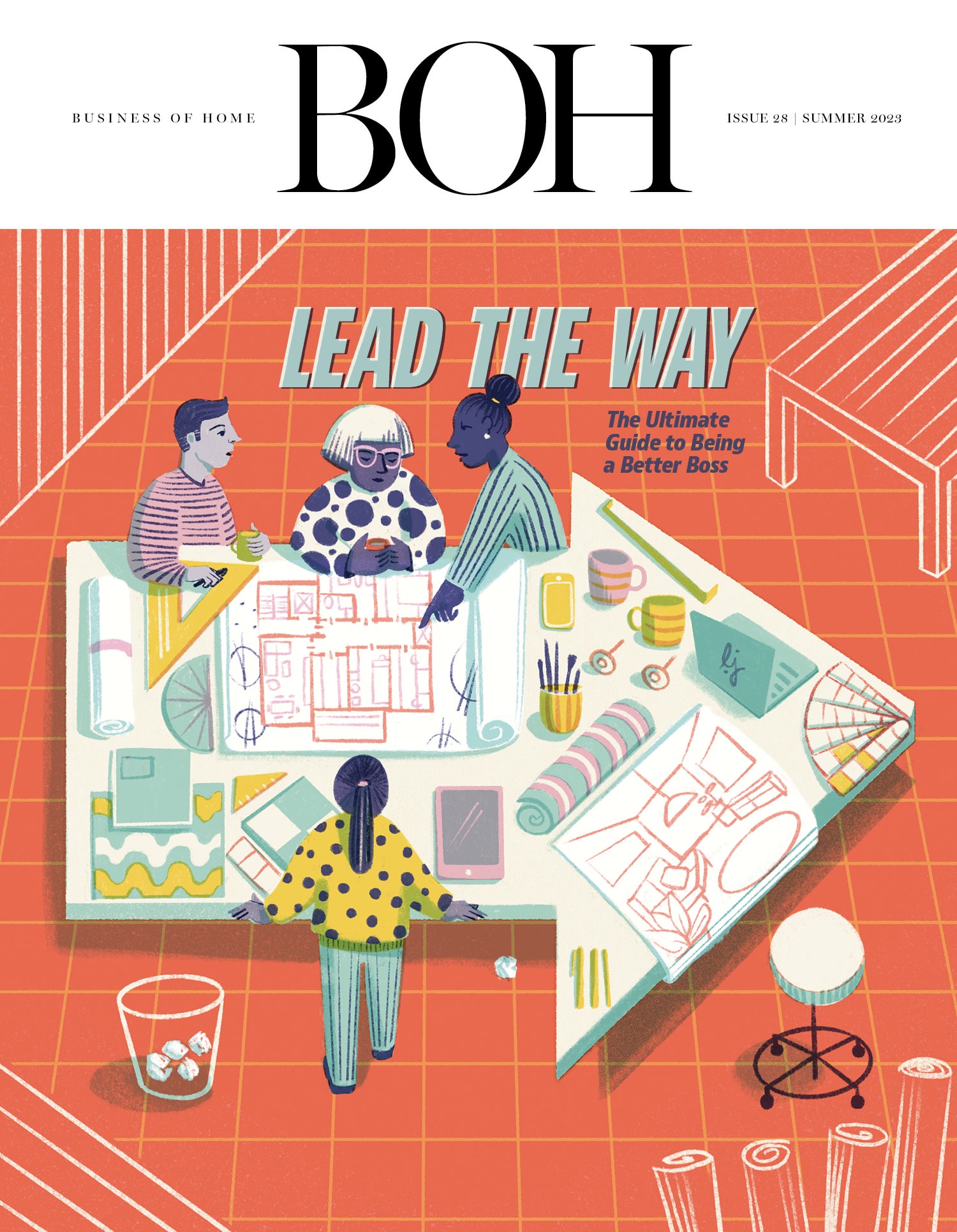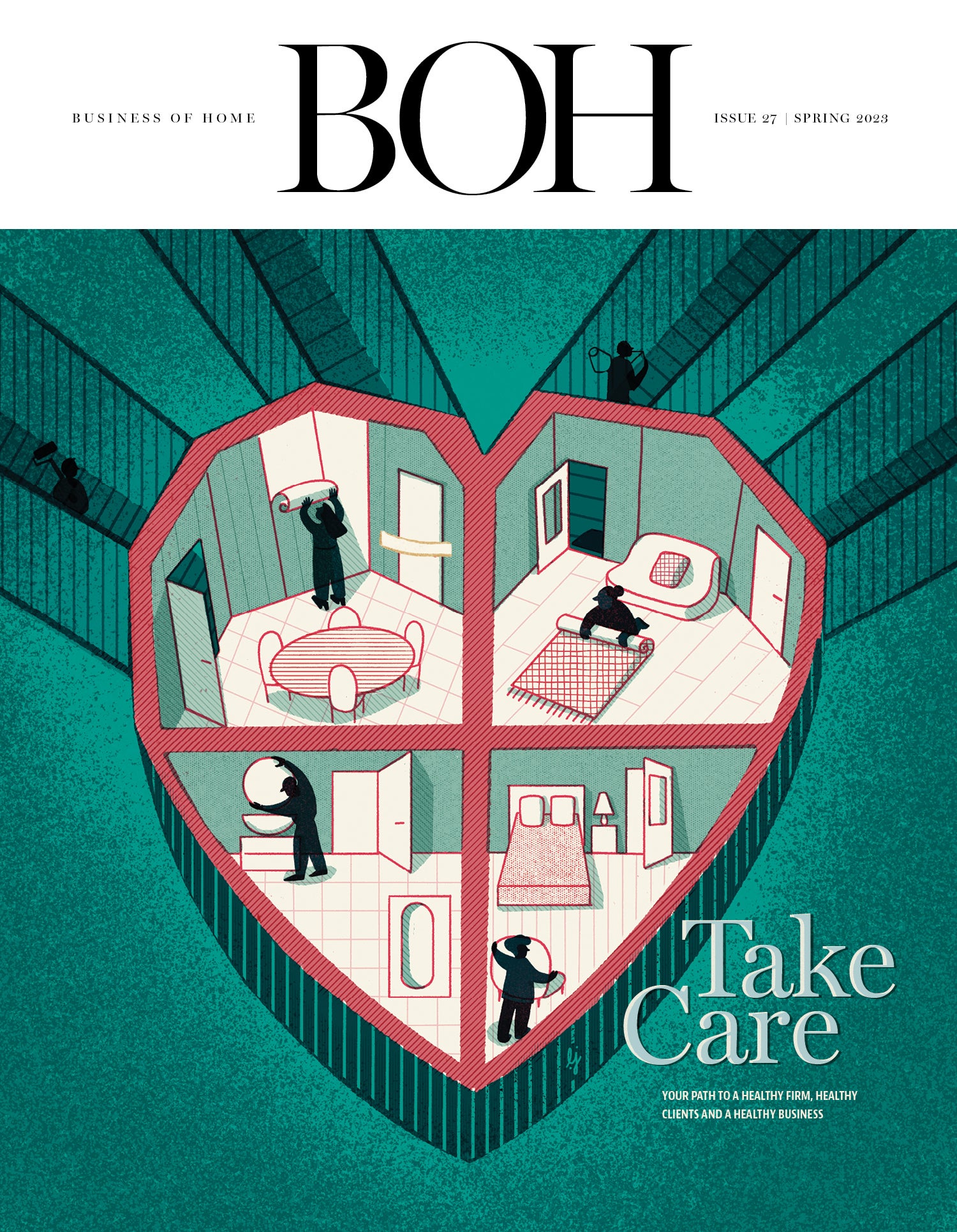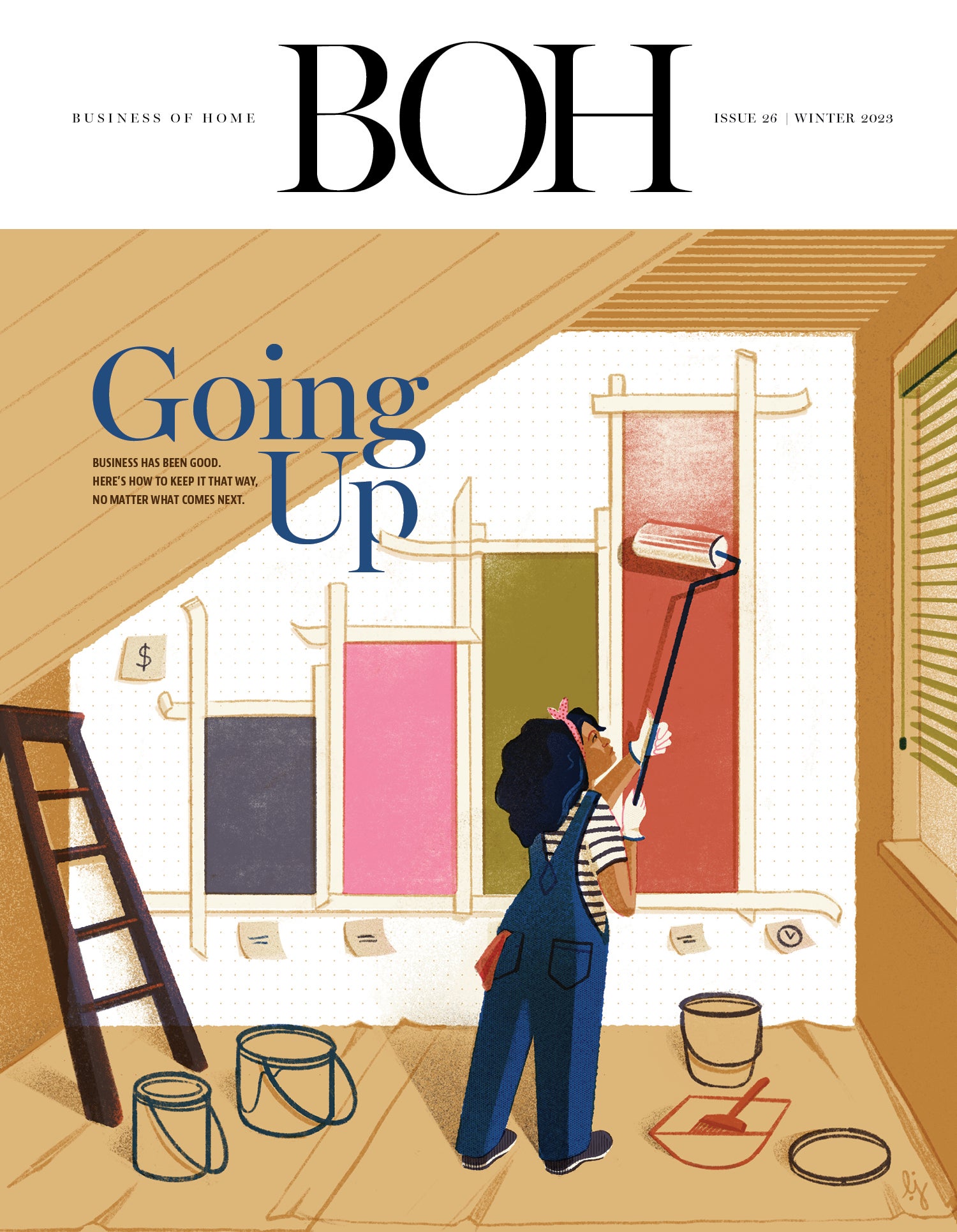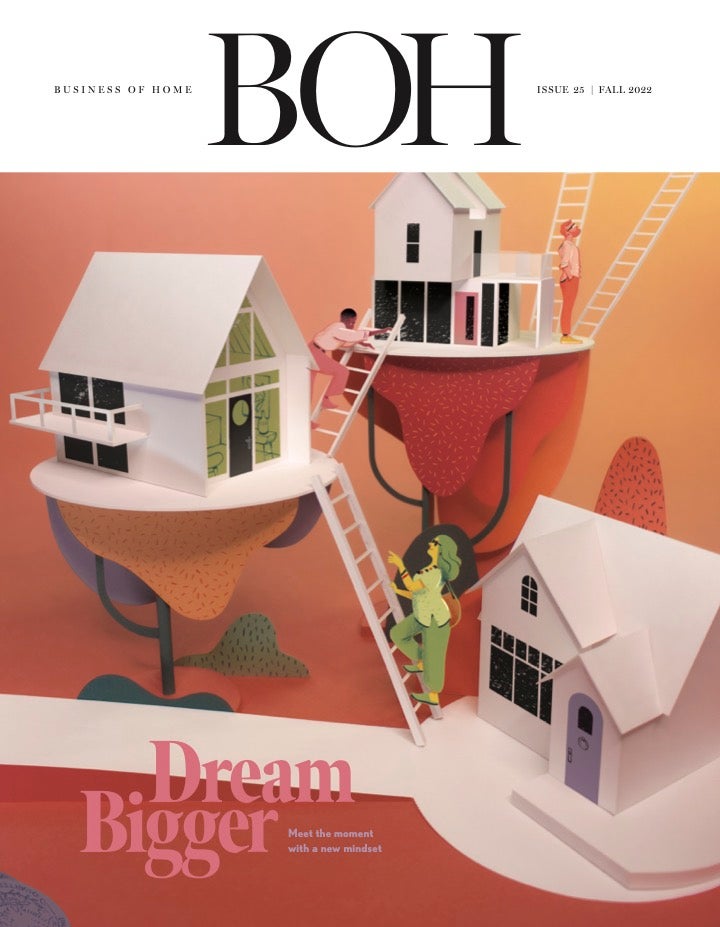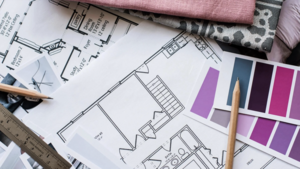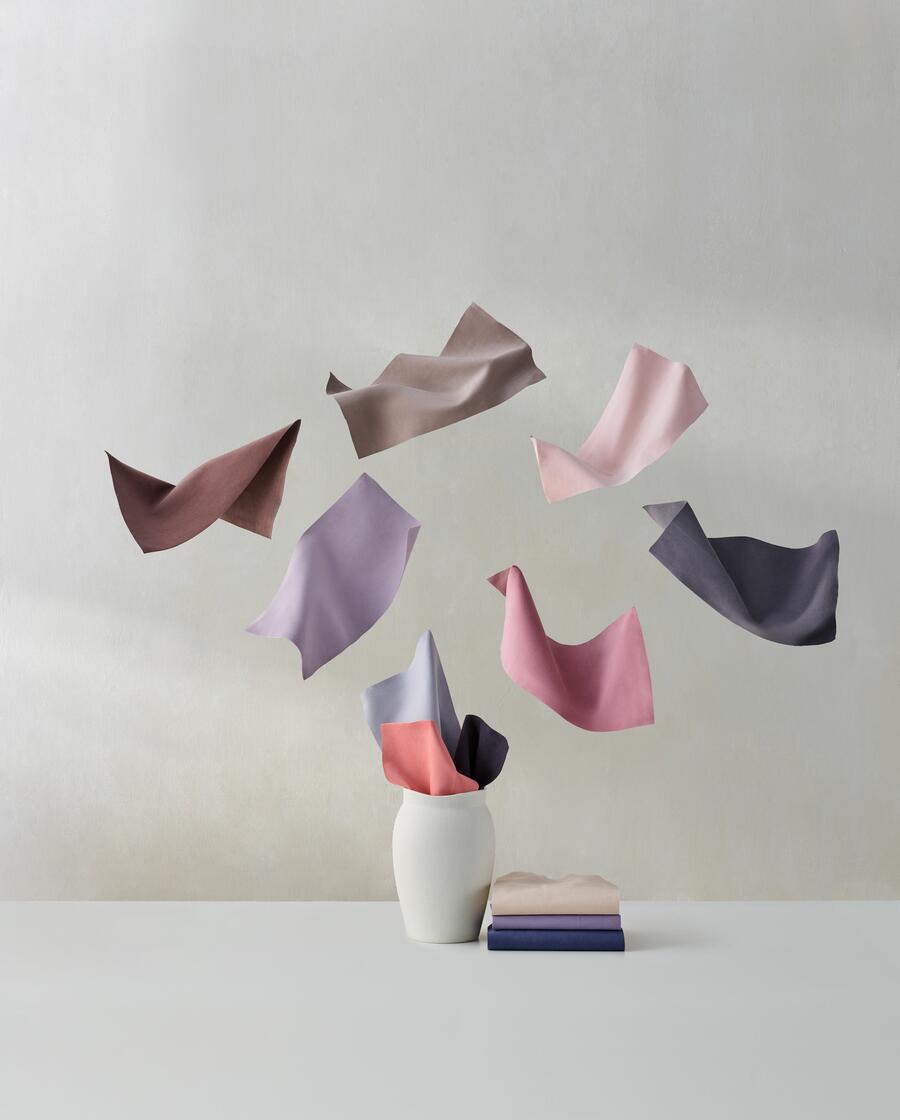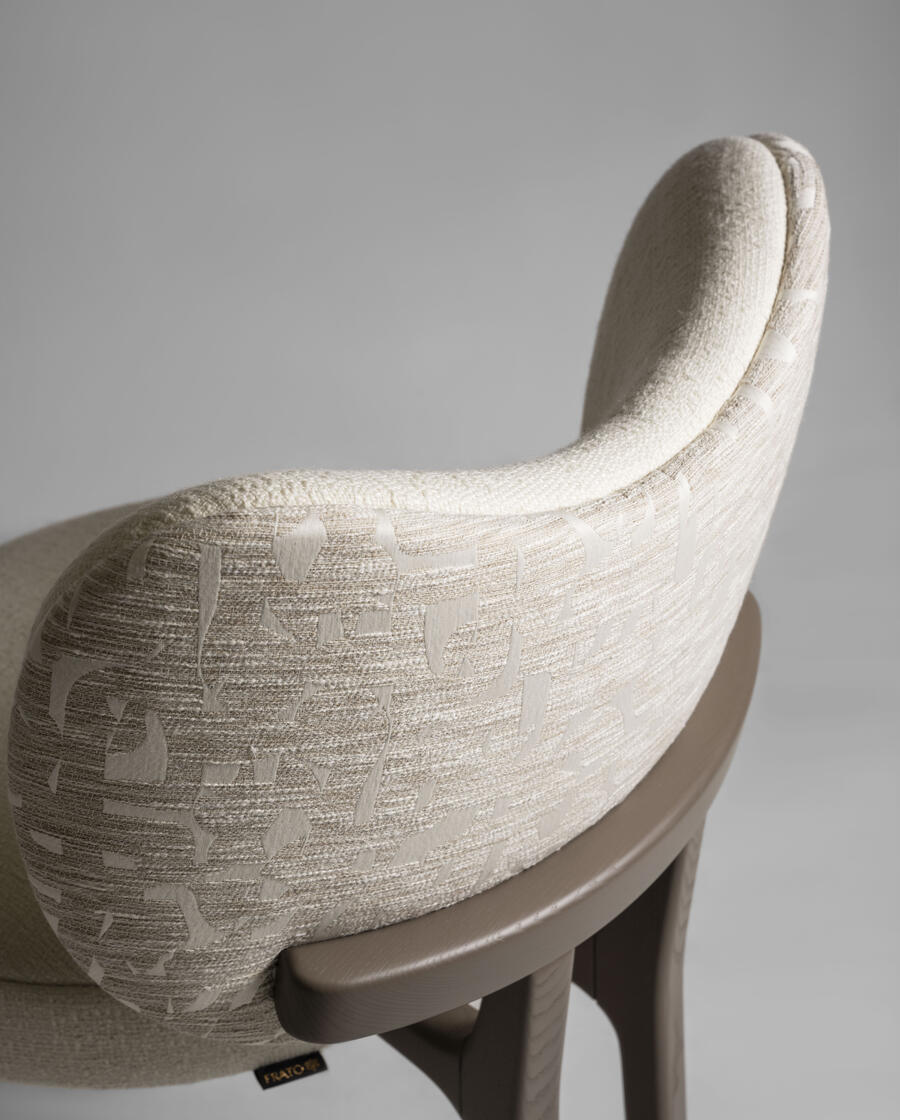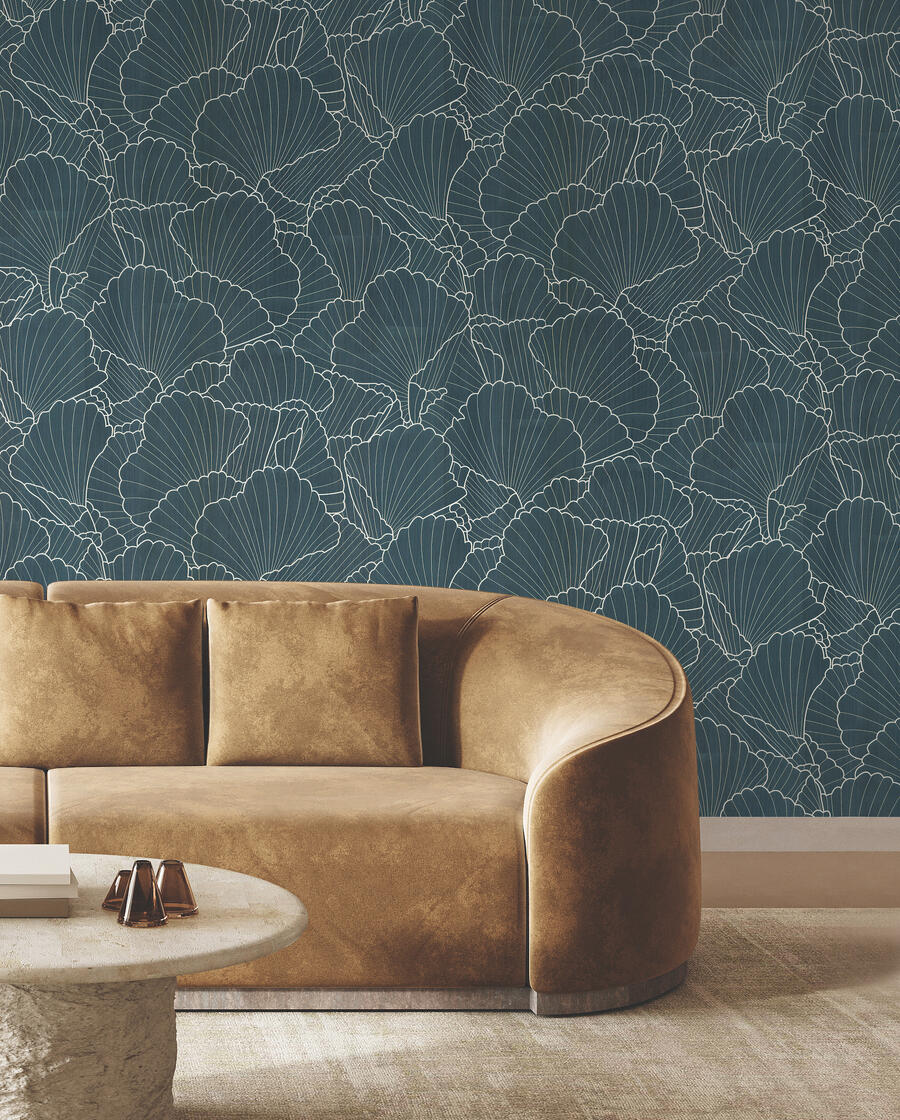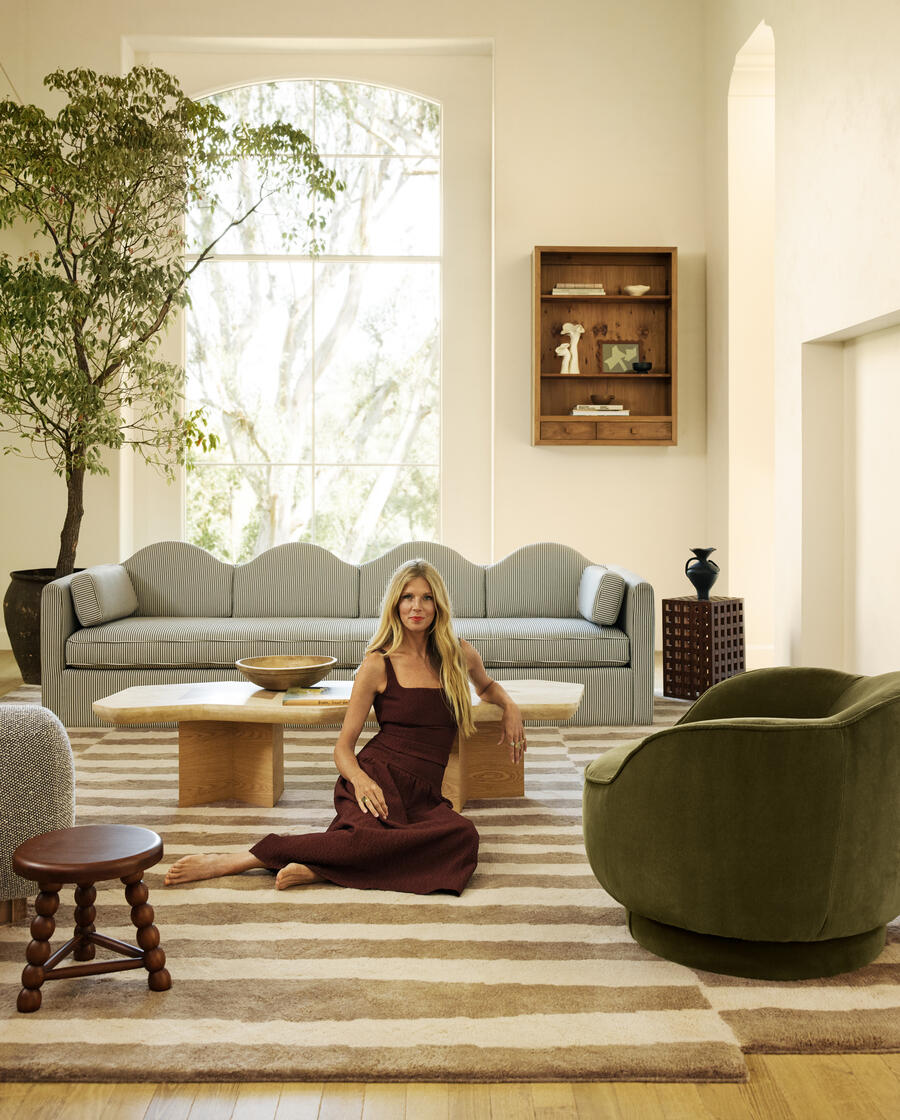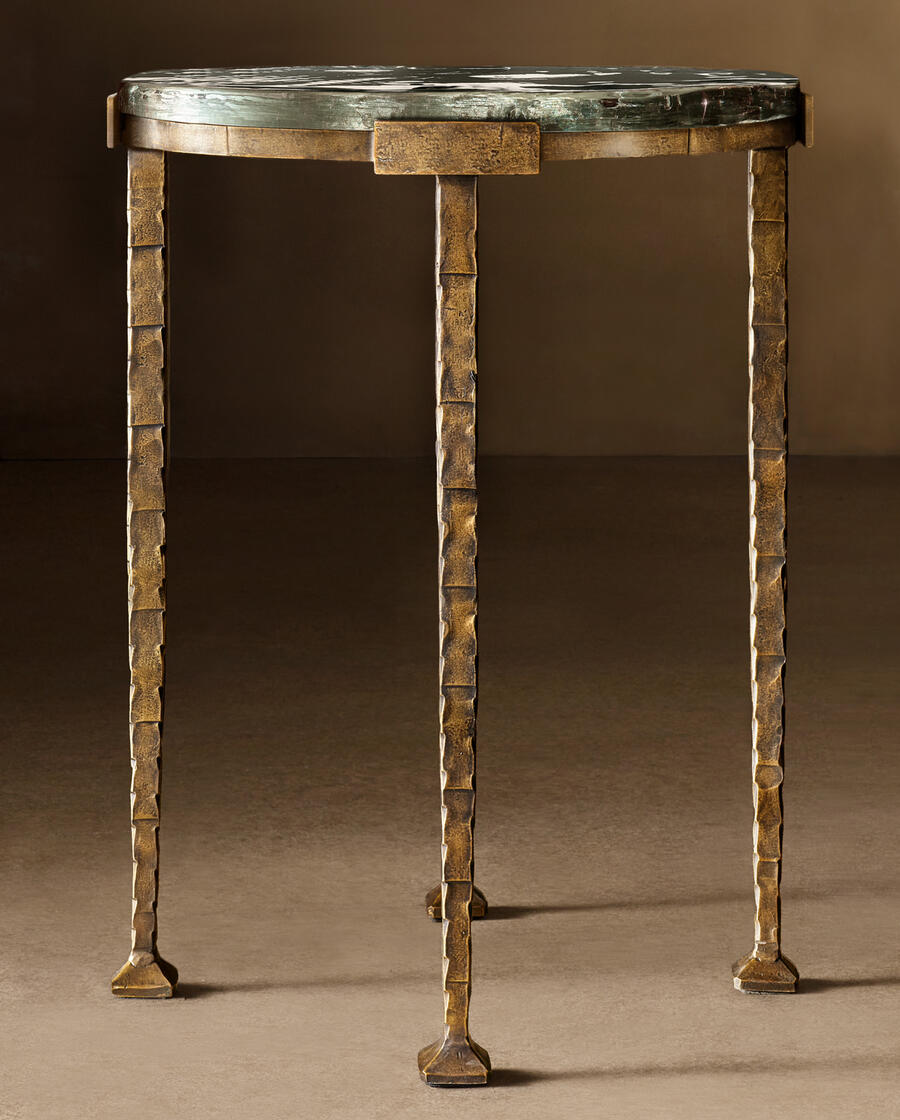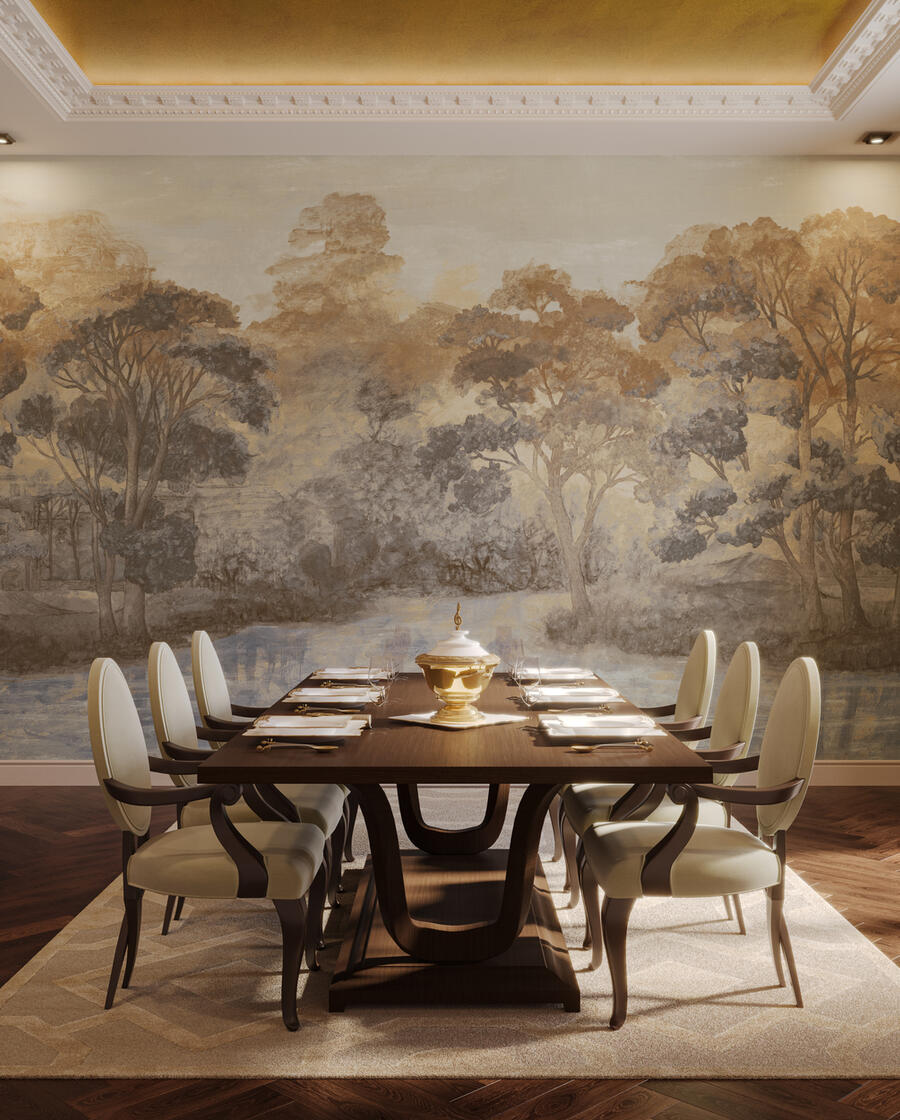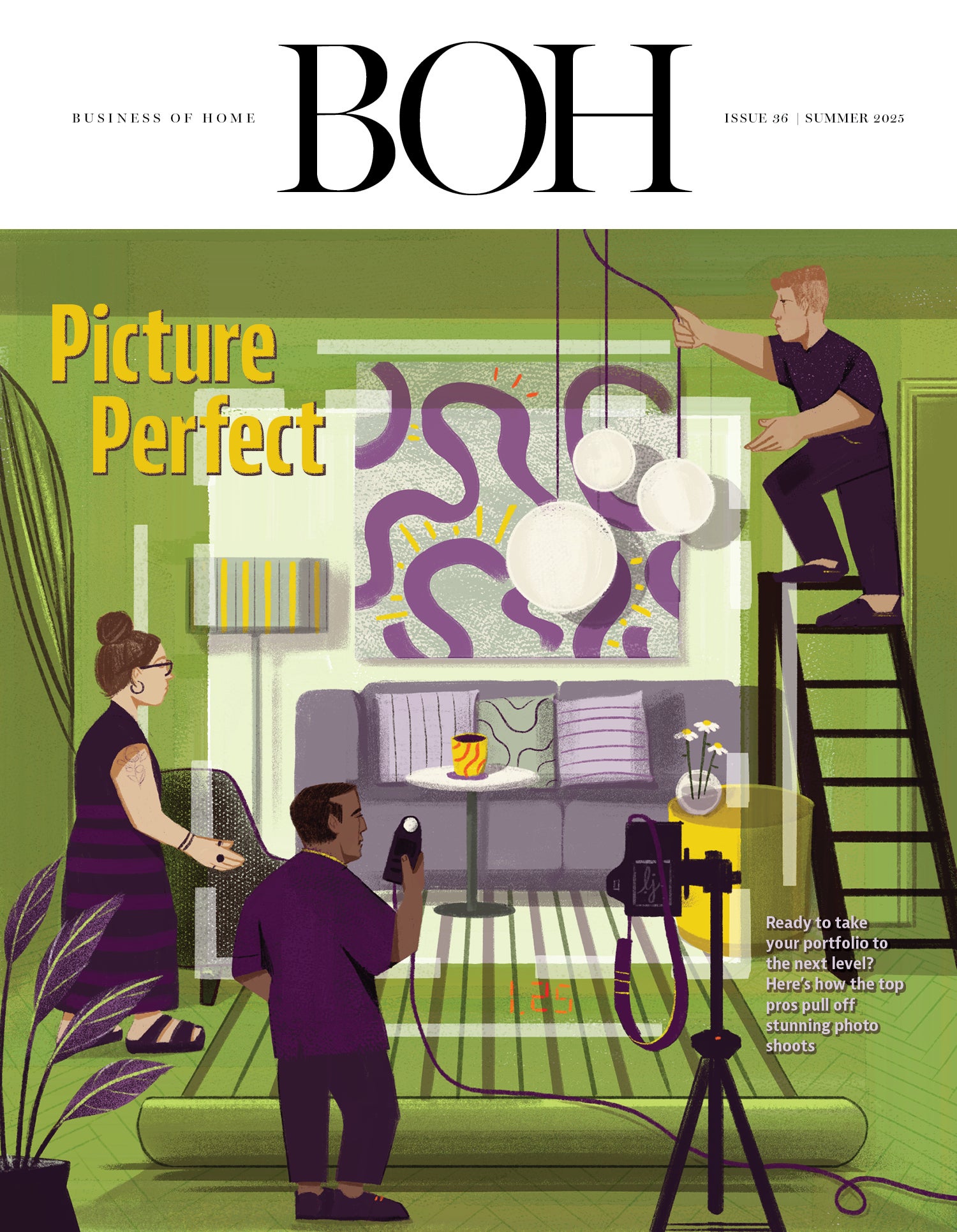Creative business coach Sean Low has been fielding designer questions for Business of Home since 2018. The industry has changed a lot since then—and so has Low’s industry-leading advice. With that in mind, he’s revisiting some of his early columns with fresh eyes, including this one on how to help clients make faster decisions. Here’s his take today.
Dear Sean,
[It seems] like every client of mine [is] moving like molasses! It’s taking clients weeks to respond to simple email requests—and forget about making larger, more expensive decisions. What can I do to prevent delays in client communication and encourage a faster response?
The Tortoise and the Hare
Dear Tortoise and the Hare,
In summer 2018, when I gave my advice about clients being slow to make decisions, an underlying assumption was that they could control the flow of money as much as they could the pace of decisions. At the time, it was very hard to require a significant portion of production money be paid in advance. Unless a designer was willing to front the cost of an item to be approved (please do not do this), there really was no mechanism to move the project forward without a client’s explicit say-so via payment.
Fast-forward to today. Advances in renderings and other presentation tools, client management software, communication apps and, most importantly, digital banking services have made it possible for designers to require all production monies be paid either wholly in advance or on a very strict schedule—so that if it is not paid, there would be a material breach (i.e., a nuclear explosion of the relationship).
Yes, you read that correctly: All designers need to have most, if not all, of their needed production money paid in advance after the design is completed and before it is produced. That does not mean that the design has to specify every single item to be purchased; just what is necessary (and approved by the client) to execute the approved vision. Approved design is an effective yes on the scope, budget and vision, meaning you have the green light to begin production.
Other bank accounts, including separate view-only, escrow-style ones, can be established so that, even though a designer controls all of the money (as it is in their name), a client can literally watch it being spent down on their behalf, separate and apart from any other monies held by the designer—such as operating balances or another client’s funds.
With this level of operational clarity and transparency, where you can show the client at any given moment how you are spending their money to produce their design, there is no reason why you should not require its payment in advance. Those designers who do not necessitate such payments are going to find themselves further and further behind, not just in their ability to produce their designs, but much more importantly, their ability to manage their clients.
With money in hand, there is no longer a need for red, yellow and green distinctions in production task status. Everything is green, in that if there is no response (but the money is there), the answer is yes. On order today is creating the conditions for eliminating any dispute as to the yes.
Think of it this way: At base, you get paid to spend your clients’ money. Most designers focus on the maximization of the spend. A fool’s errand, to be sure, and today’s world makes it a fatal flaw. Instead, focus on smart allocation of resources—where a client’s money goes, when and why. Cash Management 101, sure, but you cannot distribute resources as you intend unless, ahem, you have the resources.
The magic of spending a client’s money well is not to be understated—trust, confidence, and ultimately success live there. It is your choice whether or not to seize the opportunity the world has presented to you today.
____________
Sean Low is the go-to business coach for interior designers. His clients have included Nate Berkus, Sawyer Berson, Vicente Wolf, Barry Dixon, Kevin Isbell and McGrath II. Low earned his law degree from the University of Pennsylvania, and as founder-president of The Business of Being Creative, he has long consulted for design businesses. In his Business Advice column for BOH, he answers designers’ most pressing questions. Have a dilemma? Send us an email—and don’t worry, we can keep your details anonymous.



